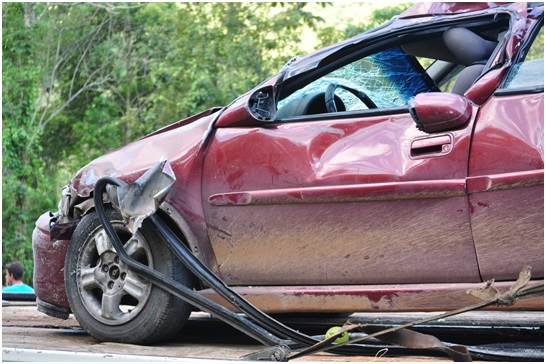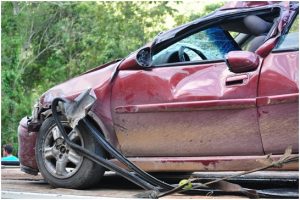Car wrecks are so common in the United States that it is easy to get the impression that car wrecking on the roads and highways is a genuine national sport. With billions of cars on the road each year, it’s impossible to ensure everyone’s safety.
These accidents cause auto repairs, property damage, human injury, and death. Statistics reveal that most drivers will be in severe car accidents at some point. Considering drunk driving victim lawyers is beneficial as they possess all the necessary information. After a catastrophic car collision, you need to understand how substantial the evidence is.
Table of Contents
ToggleWhy Do DUI Crash Victims Need Drunk Driving Victim Lawyers?
After such catastrophes, we usually think about the drunk driver’s legal ramifications. The drunk driver cannot pay for life-altering injuries to victims and their families.
Damages can only be recouped via a DUI lawsuit or an insurance claim for property damage.
If the other driver was intoxicated, you may assume it would be easy to show fault and get compensation, but doing it on your own might be challenging. The drunk driving victim lawyers can provide light on how the criminal case against the intoxicated driver relates to the civil case. You may file a drunk driving death lawsuit even if criminal charges are being brought against the drunk driver.
The DUI defense lawyers of Matthew Leyba are worth hiring for they are always prepared to go to trial on your behalf.However, since most claims arising from auto accidents are settled by insurance payouts, this may not be required.
However, the insurance provider is likely to already be aware of your DUI defense lawyers waiting to go to trial. If they are not worried about being sued by your attorney, they may be less willing to bargain in good faith.
DUI lawyers have seen how drunk driving incidents affect victims and their families. They recognize the value of monetary compensation in helping victims recover and rebuild their lives.
What Evidence Should You Gather?
- Particulars about the other drivers involved in the accident. Information such as names, addresses, phone numbers, and vehicle identification numbers should be included.
- When and how the other driver was doing anything before, during, and after the collision? It’s not always possible to determine a driver’s actions before an accident. Note whether the driver was texting before the accident and smelled of alcohol afterward. Find out if they did anything else that might have caused the collision.
- Poor road conditions are sometimes a factor in collisions. Take some photos of the wreckage to see how the road looks after the accident.
- There might be a lot of property and automobile damage. Document the wreckage of the automobiles and any other damaged property using photographs.
- Ask if anybody who wasn’t directly involved saw what happened during the accident. It is essential to locate and collect these witnesses’ names and contact details.
- If you can do so, capture the skid marks. Why? They will serve as crucial evidence in the future.
- Potentially helpful video footage from traffic light cameras, security cameras, or other sources. Accidents captured on video might provide crucial proof. Take notes or a photo of the camera’s position if you see any at the accident site.
- Remember that police will follow protocols to acquire accident information. Learn their procedures to anticipate questions from law enforcement authorities after a car accident.
Why Is It Necessary to Secure the Accident Scene After a vehicle accident?
You will need to prove that the other driver owed you a duty of care, broke it, and caused the accident to get their insurance to pay for your damages. A vehicle accident plaintiff must submit proof to the defendant’s insurance company. In this legal dispute, your side has the burden to show proof of who is to blame.
1. For the Sake of Everyone’s Safety
The immediate aftermath of an accident calls for everyone affected to be taken to a secure location and assured of their protection. First, ensure no one else is in danger of being hit by automobiles or suffering more injuries, and then call for help.
2. To Safeguard the Proof
It is crucial to secure the accident site to identify what transpired and who may be at fault later on. The result of any possible legal action might be affected if the scene is not secured to prevent the loss or tampering of evidence.
3. To Guarantee Insurance Protection
An insurance company may insist that you secure the site of an accident before they can pay out on a claim.
4. To Avoid Any Future Incidents
Protecting the scene after an accident may help prevent future mishaps. Take the case of a spill at a vehicle accident site as an illustration. To prevent another car from sliding and colliding, the spill must be cleaned up as soon as possible.
5. To Avoid Legal Trouble
You will be liable for injuries or damage if you fail to safeguard an accident scene. If you fail to clean up a spill and someone slips and falls; as a result, you may be held liable for their injuries.
When feasible, securing the site of an accident might help avoid legal issues later on. For instance, if you are involved in a hit-and-run accident and want to file a police report, you will need the other driver’s license plate number.
Help keep everyone safe and address any legal issues that may arise quickly by protecting the scene and taking photos or videos.
6. Potential Traffic Problems Can Be Avoided
Securing the site of an accident may prevent further traffic delays. In an accident at a major crossroads, traffic must be restored as soon as possible.
7. To Safeguard Your Investment
Securing the accident site may be necessary to safeguard personal belongings. In the event of an automobile collision, for instance, you should move your vehicle out of the line of incoming traffic.
8. If We Want To Live Peacefully
Locking down the site of an accident may help keep the peace and prevent trouble from breaking out. If two drivers have a minor collision, it’s best if they can exchange information and go on without getting into an altercation.
9. Standard Operating Procedures for Handling Evidence
An investigator may need to wear an utterly sterile suit, protecting everything, including hair and shoes, to prevent introducing their DNA to the scene. Mostly, they wear latex or chloroprene gloves at crime scenes, and these are changed often as evidence is gathered.
These gloves protect the investigator and crime scene from toxic bacteria and debris. Respirators protect against fingerprint powder, chemical processes, and rotten decomposition smells.
10. Concealing and Storing Evidence
To protect DNA and other trace evidence, investigators should store most evidence in paper bags and envelopes. Plastic bags absorb moisture and degrade evidence faster.
Forensic examiners must seal evidence in damp proof collecting bags or envelopes. Liquid evidence must be refrigerated and preserved in a sterile container.
Evidence containers must include the investigator’s contact information, case number, location, date, and time. Each piece of evidence gathered should be recorded in its respective file for easy retrieval.
11. Monitoring the Evidence
Proper chain-of-custody requires investigators to record who collected, handled, transported, and received each piece of evidence and when.
A court may rule that contaminated evidence is inadmissible if the chain-of-custody documentation is lacking.
Conclusion
Protecting the site and noting what transpired after an accident is crucial. It may aid in swiftly resolving legal concerns and ensuring everyone’s rights are protected. A well-secured and recorded accident scene helps ensure safety and fairness.







